If you’re a professional tradesperson or DIY enthusiast, having the right drill battery is essential to making every project count. But how long should your drill battery last? With so many battery technologies out there, it can be hard to tell: which ones are reliable and efficient. This comprehensive guide will break down the science behind drill battery life and provide tips on how to extend the life of your batteries on each charge. So, if you’re looking for answers on how long a drill battery should last, you’ve come to the right place!
Factors Affecting Longevity —Types of Drill Batteries
Nickel-Cadmium Batteries
Nickel-cadmium (NiCd) batteries are the oldest type of drill battery and have been around since the mid-1970s.
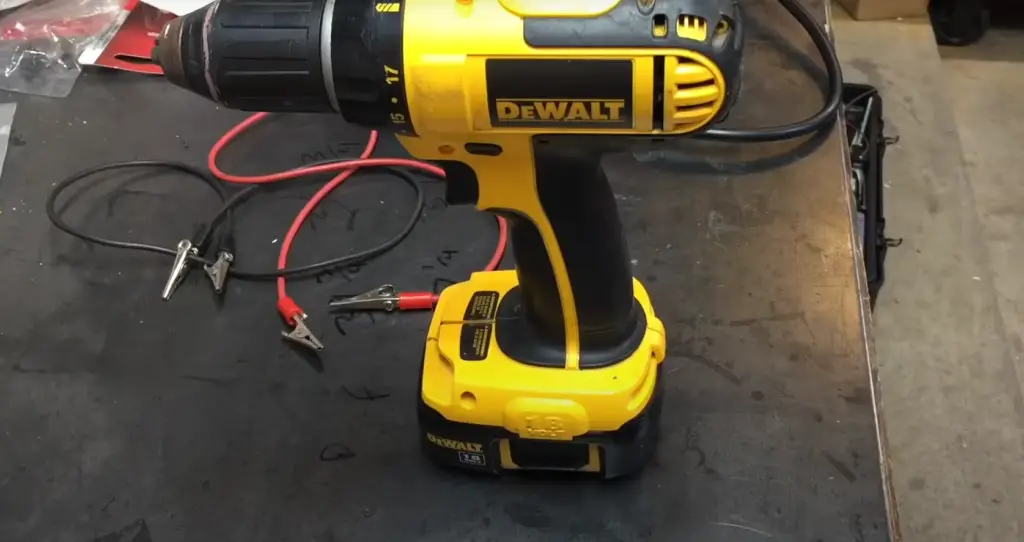
Nickel Metal Hydride Batteries
The next generation of drill battery technology was Nickel Metal Hydride (NiMH). These came to market in the late 1990s and offer better performance than NiCds in terms of energy density and longevity. NiMH batteries have the same ‘memory effect’ issues as NiCds, but to a lesser degree, and so their performance is slightly improved over time.
Lithium-Ion Batteries
The most recent development in drill battery technology has been Lithium-ion (Li-ion). These were developed in the early 2000s and are now widely available. Li-ion batteries offer far superior performance compared to both NiCd and NiMH, with much higher energy density, longer life expectancy, better power delivery characteristics, and no memory effect. For this reason, they are now the most popular type of drill battery on the market today [1].
Getting the Most Out of Your Cordless Drill
Self-Discharge Maintenance
It is important to monitor the self-discharge rate of your cordless drill’s lithium-ion batteries. Self-discharge occurs naturally over time, and if not monitored can cause a decrease in performance or even battery failure. To ensure your battery’s performance level remains optimal, it is important to discharge them completely once every 6 months and then recharge them fully.
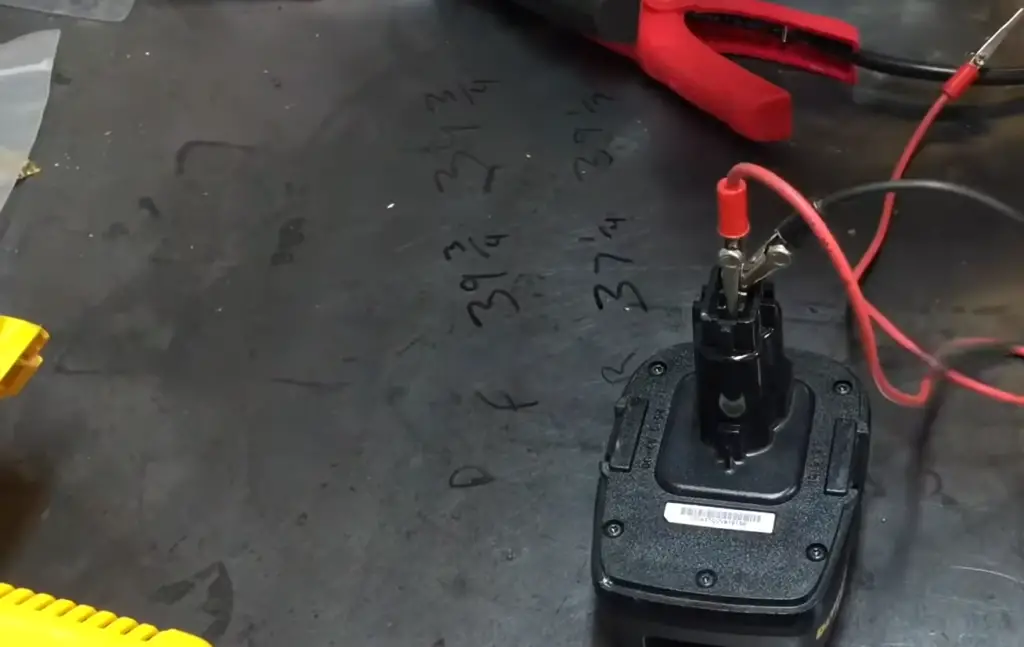
Storage Tips
When storing your cordless drill for long periods, make sure to remove its battery and store in a cool, dry place away from heat sources like radiators or direct sunlight. Additionally, avoid charging the battery when it isn’t necessary as this only serves to deplete its lifespan.
Type of Work
You should always make sure that your cordless drill is suitable for the job it’s intended to do. Don’t assume a large chuck size means it is suitable for every task – if you are drilling into softer materials such as wood, make sure to use a smaller chucked cordless drill. Similarly, if you need to drill through metal or hard masonry, opt for a larger-chucked model with a higher power output.
Cleaning and Maintenance
After completing the job, it’s essential to clean up any dust or debris left behind on your cordless drill. This helps extend its lifespan and ensure peak performance when using the tool next time. Also, be sure to check periodically for loose screws and connections, as this can affect the tool’s performance [2].
Tips for Extending Drill Battery Life
- Use Lithium-ion batteries whenever possible; they have the longest life and will help extend your drill’s battery performance.
- Charge the batteries regularly. Most cordless drills come with a charger that can recharge your battery in about one hour or less, so make sure you plug it in when not in use for the best results.
- Try to keep your drill cold if possible; as high temperatures can reduce the life of the battery significantly.
- Make sure you allow enough time for charging between uses; if you try to charge too quickly, the battery may become overcharged and eventually fail prematurely as well.
- Avoid using your drill on heavy-duty tasks all day long; this will only put a strain on the battery and reduce its life.
- When storing your drill, make sure to discharge any remaining charge completely to maximize the battery’s life.
- If you find yourself needing more power than your current battery can provide, invest in an additional spare battery so that you can switch out and recharge one while still using the other.
- Regularly clean the contacts of both the charger and drill to ensure a good connection between them and maximize charging efficiency.
- Make sure to check your owner’s manual for further instructions or tips; some drills may have unique features or settings that can help extend their battery life even further!
- Finally, invest in a good quality drill that uses long-lasting batteries; it’s worth the extra money to get extended battery life.
The above tips should help you significantly extend the performance of your cordless drill, and ensure that you get the most out of your investment [3]!
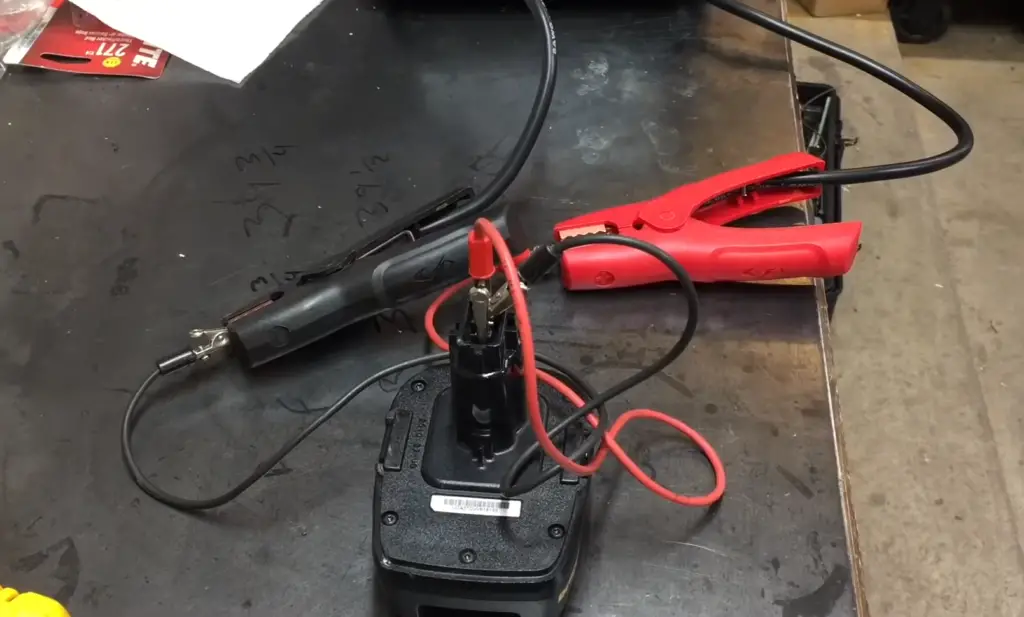
Maintenance and Care for Drill Batteries
Drill batteries come in a variety of shapes and sizes, and they require some special care to ensure their longevity. Here are some tips for maintaining your drill batteries:
- Make sure the battery connections stay clean. Dust and dirt can build up on the contacts over time, leading to poor performance or even complete failure. Clean the contacts with a soft dry cloth or cotton swab regularly to avoid this issue.
- Avoid extreme temperatures when using or storing your drill batteries. Cold temperatures can cause the cells to become sluggish while hot temperatures can damage them permanently. Keep them in a cool, dry environment whenever possible.
- Recharge your batteries as soon as possible after use; don’t let them sit in a discharged state for too long. A lithium-ion battery should be recharged every three months or so, while nickel-cadmium batteries should be recharged at least once a month to maintain their full charge.
- Choose an appropriate charger for your batteries; some chargers are designed for specific types of drill batteries and will provide optimal charging times and performance.
- Avoid overcharging or undercharging your battery; this can cause damage to the cells and reduce the lifetime of the battery drastically. Use an appropriate charger with timer features to ensure that your battery is not overcharged or left in a discharged condition for too long.
- Store your batteries properly when they’re not being used. Lithium-ion batteries should be stored at room temperature in a cool, dry place; avoid exposing them to heat or direct sunlight. Nickel-cadmium and nickel-metal hydride batteries should also be stored in a cool, dry environment but can tolerate slightly warmer temperatures than lithium-ion cells.
- Be sure to inspect your drill battery periodically for signs of wear and tear; replace the battery if necessary to ensure optimal performance.
Following these tips will help you get the most out of your drill battery and extend its life significantly! By taking care of your drill batteries, you’ll ensure that they are always ready when you need them, without any unexpected issues. Keeping your batteries in good condition will also help you to get the most out of your drill and ensure that it runs at its peak performance.
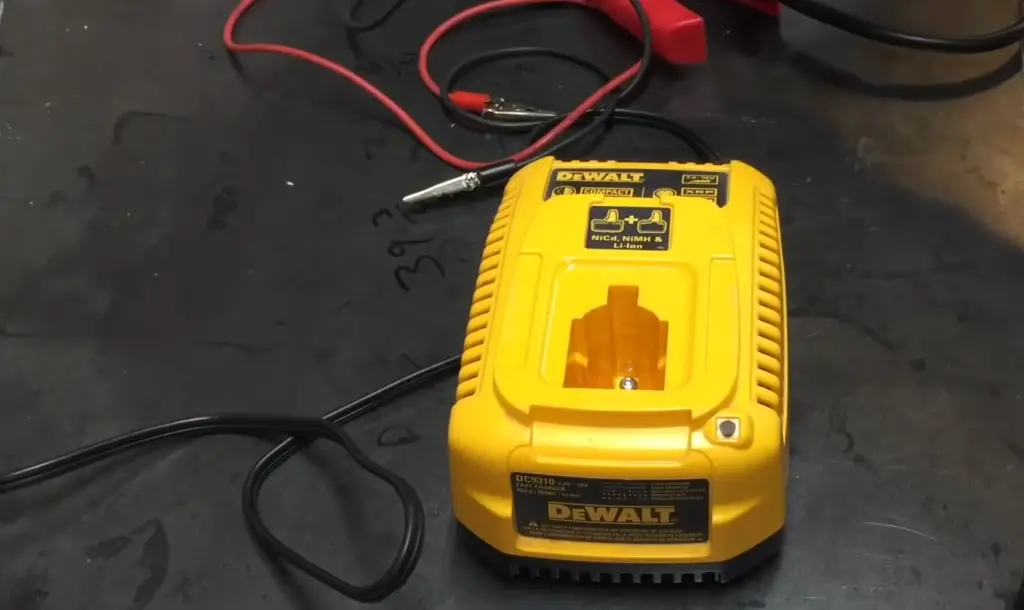
Important Tips to Increase the Performance of Your Cordless Drill’s Battery
Do it
- Keep your cordless drill and its battery clean to ensure better performance. Wipe off any dirt or debris with a damp cloth, and be sure to completely dry before charging the battery again.
- Always store your cordless drill in a cool, dry place. Extreme temperatures can cause damage that can reduce the life of the battery.
- Use only recommended chargers for your specific type of battery. Using an incompatible charger can cause damage and reduce the lifespan of the battery.
- Charge batteries slowly when possible; fast charging can also reduce their lifetime usage capacity over time if done too often or rapidly without allowing them time to cool down between charges.
- Avoid leaving batteries unattended while charging. Overcharging can cause them to overheat and may result in damage or premature failure.
- Avoid discharging the battery completely and make sure you charge it again as soon as possible to maintain performance and extend its life. Rechargeable batteries lose their ability to hold a charge if discharged too much or left uncharged for too long.
- Never force your cordless drill on a job, instead use the right combination of speed, pressure, and torque required by the workpiece material being drilled into. This will help reduce strain on the motor and battery, thus increasing their lifespan and efficiency.
- Use a power management system such as an energy-saving LED light bulb when needed, which can help reduce energy consumption and extend battery life.
- If you are working with a cordless drill in cold weather, it might be wise to keep spare batteries on hand as the temperature can reduce their efficiency.
- Regularly check your cordless drill’s battery for signs of wear and tear or damage, such as swelling or bulging. If the battery appears damaged do not use it and replace it with a new one immediately.
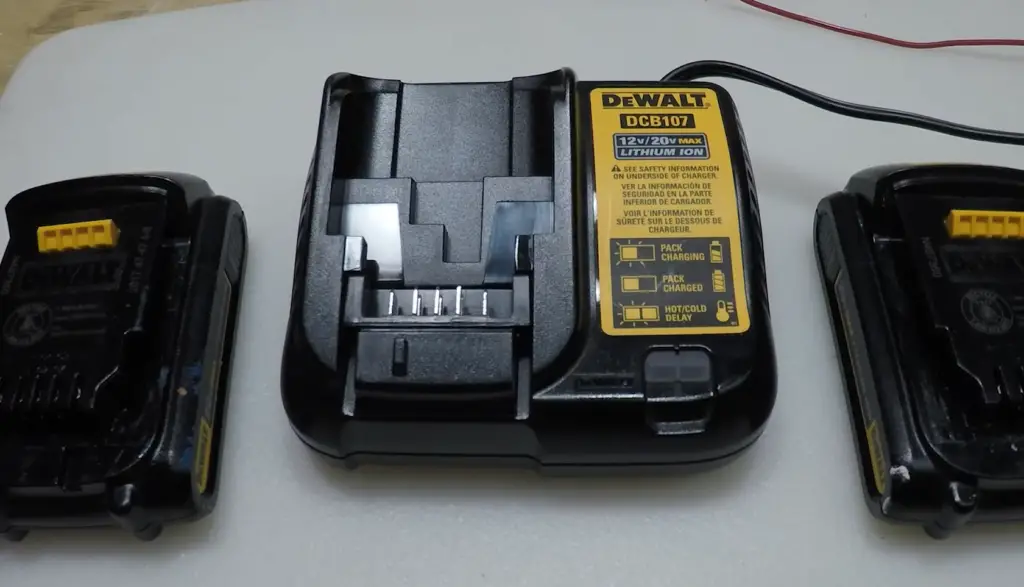
Don’t Do
- Don’t leave your cordless drill and battery plugged into the charger for extended periods without use. This can overcharge the battery and reduce its performance and lifespan.
- Don’t drop or store your drill in a place where it could be exposed to moisture, dust, or extreme temperatures as this will also damage the battery.
- Never attempt to force a harder job than what is recommended for your type of cordless drill; this could cause unnecessary strain on both the motor and battery, reducing their lifespan significantly.
- Don’t forget to unplug the charger from the wall before removing the battery from its housing or attaching it back onto the tool after charging has completed – this will help prevent any accidental short-circuiting.
- Don’t use an incompatible charger with your battery as this can cause damage to the battery or even start a fire – always make sure you are using the correct charger for your specific battery type.
- Never attempt to disassemble the battery or tamper with its internal components, as this could cause serious damage and may be hazardous in some cases.
- Don’t forget to check on your cordless drill’s performance regularly; if it is not working as efficiently as it should, then there might be an issue with either the motor or the battery which needs to be addressed before further damage occurs.
- Don’t leave the battery in a discharged state for too long, as this can cause it to become irreversibly damaged and lose its ability to hold a charge.
- Avoid using your cordless drill in hot or humid conditions, as this could reduce its efficiency and damage the battery over time.
- Don’t forget to read the manual that comes with your cordless drill to ensure you are correctly handling both the tool and its battery – some models may require additional maintenance or special care when charging and storing them.
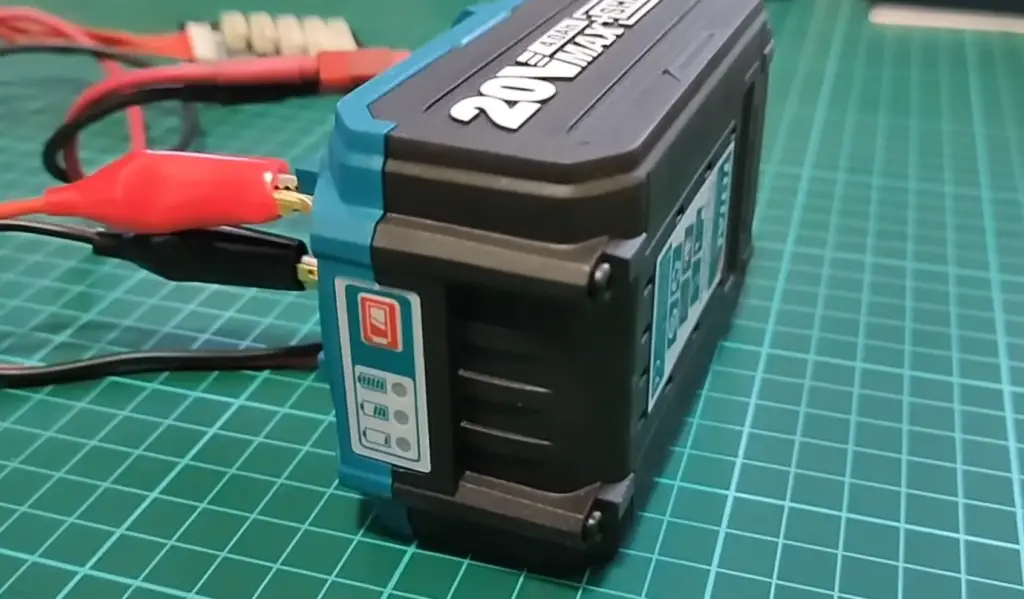
FAQ
How long does a rechargeable drill last?
The lifespan of a rechargeable drill depends on the type and quality of the battery used. Generally, a good-quality NiCd or Li-ion battery will last for about 1,000 charge/discharge cycles. This translates to approximately two years of regular use, depending on how heavily it is used. It’s important to keep in mind that batteries should be stored in a cool place when not in use to maximize their life span. Additionally, it’s wise to get into the habit of recharging your drill as soon as you see the battery power dropping below half. Doing so can extend the life of your rechargeable drill by hundreds of extra charge/ discharge cycles.
How do I know if my rechargeable drill is charging properly?
The easiest way to check if your rechargeable drill is charging correctly is by listening for a beep or some other audible signal. Many modern drills are equipped with an indicator light that changes color when the drill is fully charged. Additionally, you can also remove the battery and read its charge level on a multimeter. If the voltage reading matches the specifications of your battery model, then it means that it’s been properly recharged.
What kind of maintenance should I do to my rechargeable drill?
Your rechargeable drill requires regular preventive maintenance just like any other power tool. After every use, make sure to clean out any dust or debris from both the motor housing and all the vents. Additionally, you should also check to make sure all the screws and bolts are securely tightened. And if your drill has a removable battery pack, be sure to check the terminals for corrosion or dirt build-up regularly. Finally, it’s important to store your drill in a cool and dry place when not in use for optimal performance.
Are there any safety precautions I should take when using my rechargeable drill?
Yes, absolutely! It’s essential to always wear protective gear such as work gloves and safety glasses whenever operating a power tool of any kind. Additionally, unplug the charger or remove the battery before making any adjustments to your drill and keep an eye on both your hands and feet while drilling so that you don’t accidentally get injured. Finally, never leave your drill unattended while it’s plugged in or the battery is inserted as this could be a fire hazard.
How long should a drill battery charge for?
The standard charging time for a drill battery depends on the type and size of the battery, but it generally takes anywhere from 1 to 3 hours. It’s important to note that most modern-day drills come with features such as trickle charging, which can significantly reduce the charging time. Additionally, you should always remove your battery when it’s done charging and store it in a cool place as this will help extend its life span.
What is the best way to store my rechargeable drill?
The best way to store your rechargeable drill is in a dry and cool place away from any direct sunlight or heat sources. Make sure to keep all tools and batteries securely stored so they don’t get damaged or lost. Additionally, it’s wise to invest in a quality storage case so you can easily transport your drill from one job site to the next.
What is the difference between NiCd and Li-ion batteries?
NiCd (Nickel Cadmium) batteries are an older technology that has been around since the 1950s and are known for their durability. They tend to be heavier and more expensive than other types of rechargeable batteries. On the other hand, Li-ion (Lithium Ion) batteries offer superior performance compared to NiCds but are typically lighter in weight and less expensive. Additionally, Li-ion batteries also tend to last longer before needing replacement or recharging.
What type of drill bit should I use for my rechargeable drill?
The type of drill bit you should use with your rechargeable drill depends on the material you’re drilling into and the desired result. If you’re drilling into wood, a spade or flat-blade bit is typically best. For metal, a high-speed steel twist bit is ideal. Additionally, if you’re drilling into masonry or concrete, a carbide-tipped masonry bit is generally recommended.
How long do 18V batteries last?
The lifespan of 18V batteries varies depending on the type and quality of the battery used. Generally, NiCd batteries will last for about 500 charge/discharge cycles while Li-ion batteries can usually last up to 1,000 charge/discharge cycles. Additionally, proper storage and maintenance are key in maximizing the life span of any rechargeable battery.
Useful Video: How to revive a dead rechargeable power tool battery easily
Conclusion Paragraph
A drill battery on one charge can last a surprisingly long amount of time, depending on the type and brand that you buy. Making sure to take care of it properly by charging it regularly and following instructions can help increase its lifespan even further. With so many different options available, finding the right drill battery for your needs isn’t too difficult. Ultimately, picking the right one comes down to personal preference and budget but with the right knowledge of which types are best suited for your application, you can make an informed decision quickly. With a quality battery that is well taken care of, there is no reason why you won’t be able to use your drill for years to come.
References
- https://toolsowner.com/how-long-does-the-battery-on-a-cordless-drill-last
- https://www.safetyfrenzy.com/protect-drill-battery/
- https://www.hunker.com/13718460/how-to-extend-the-life-of-power-tool-batteries






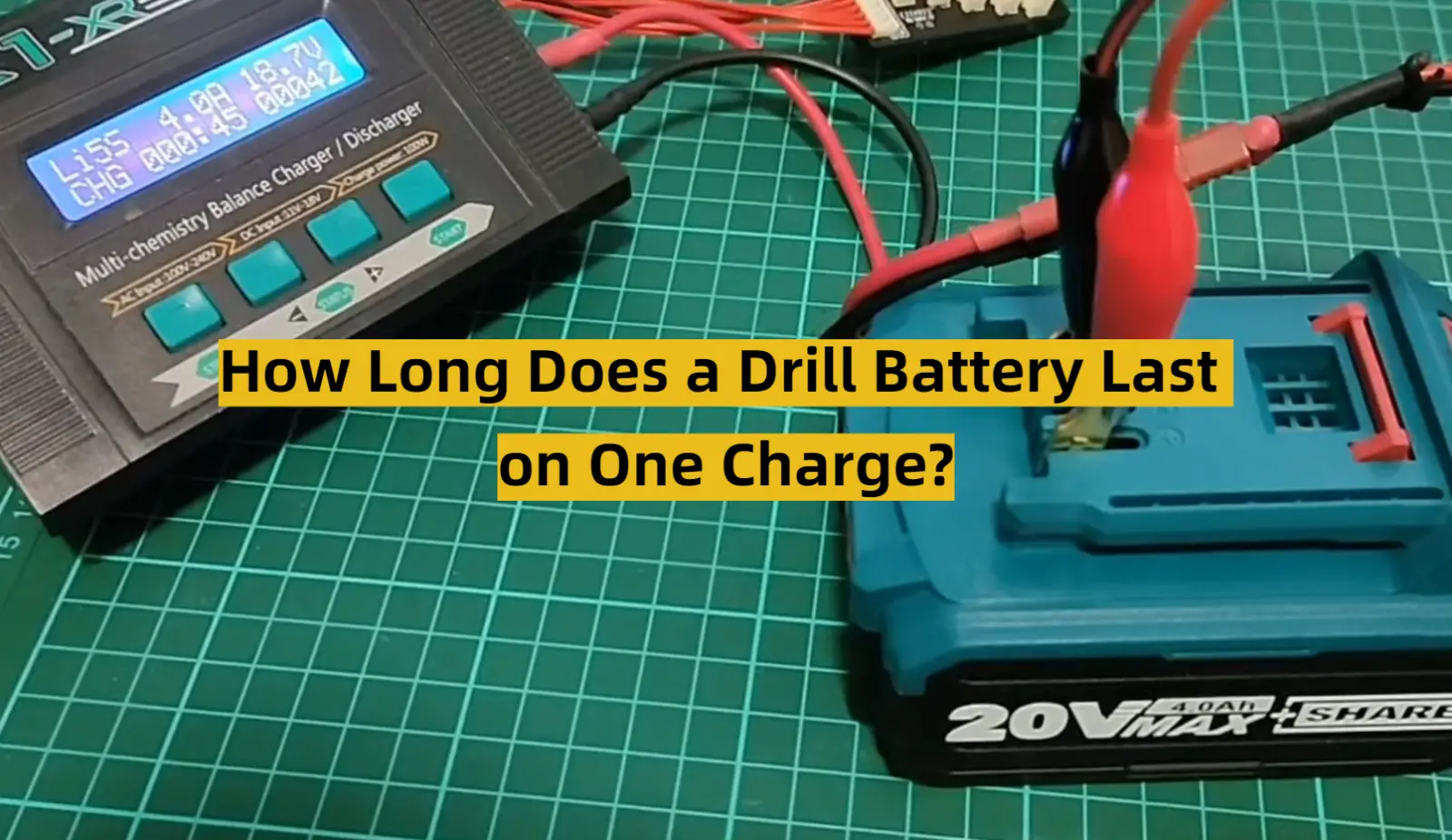




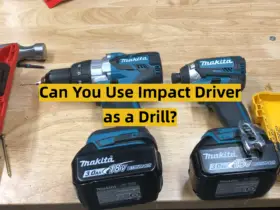

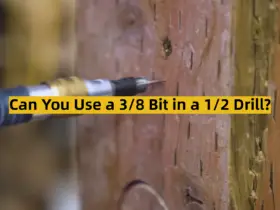
Leave a Reply